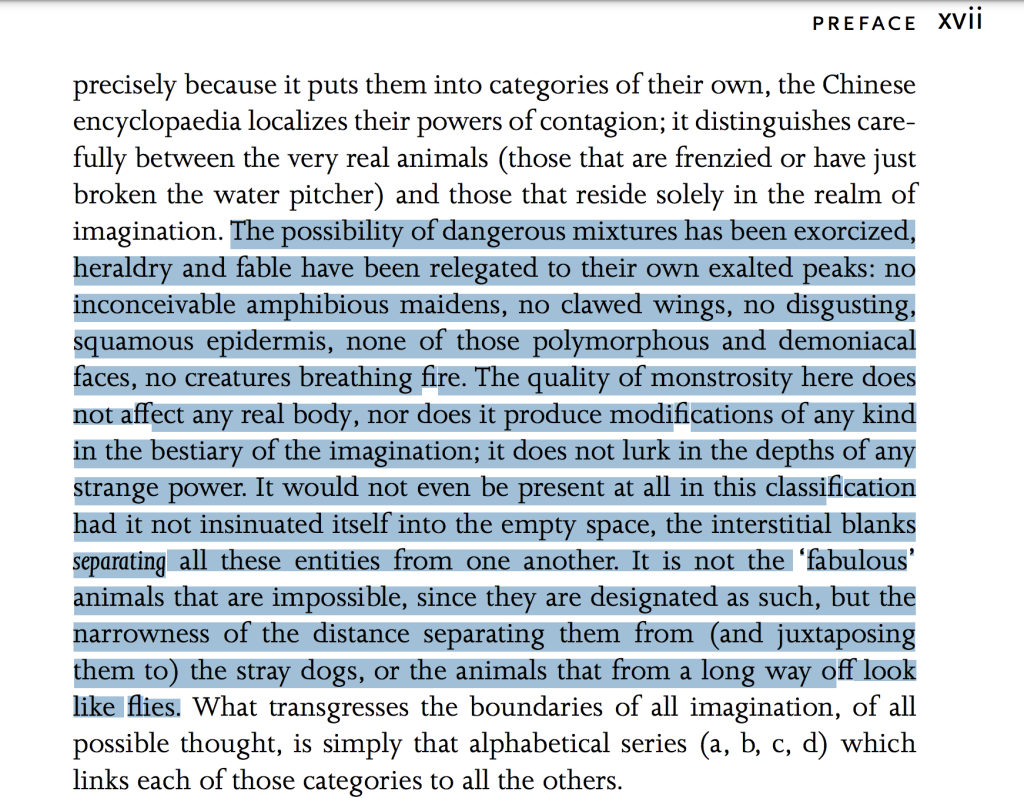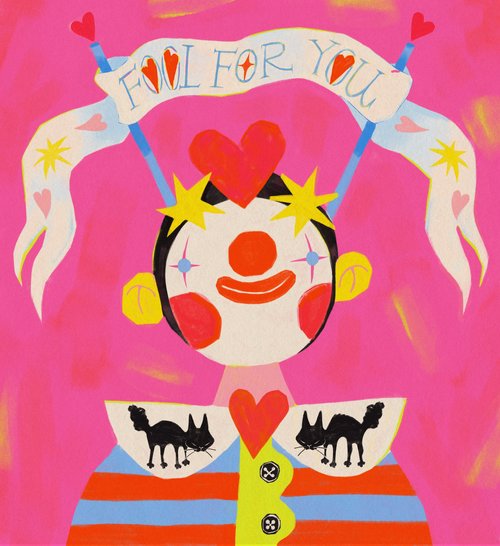Metadata
Metadata for the Selected Text:
‘The possibility of dangerous mixtures has been exorcized, heraldry and fable have been relegated to their own exalted peaks: no inconceivable amphibious maidens, no clawed wings, no disgusting, squamous epidermis, none of those polymorphous and demoniacal faces, no creatures breathing fire. The quality of monstrosity here does not affect any real body, nor does it produce modifications of any kind in the bestiary of the imagination; it does not lurk in the depths of any strange power. It would not even be present at all in this classification had it not insinuated itself into the empty space, the interstitial blanks separating all these entities from one another. It is not the ‘fabulous’ animals that are impossible, since they are designated as such, but the narrowness of the distance separating them from (and juxtaposing them to) the stray dogs, or the animals that from a long way off look like flies’(Michel Foucault, The Order of Things, 2001, p xvii).

Title: The Order of Things, Preface (Monstrosities and Classifications)
Date: 2001
Author: Michel Foucault
Genre: Philosophical Analysis
Setting: A contemplative environment, discussing abstract concepts related to classifications and the nature of the unreal or fantastical.
Keywords:
*Dangerous mixtures
*Heraldry
*Fable
*Amphibious maidens
*Clawed wings
*Epidermis
*Polymorphous faces
*Fire-breathing creatures
*Monstrosity
*Bestiary
*Imagination
*Classification
*Fabulous animals
*Stray dogs
*Flies
Themes:
*The nature of impossibility and possibility is imagined.
*The distinction between the real and unreal.
*The spaces or distances that separate or connect different classifications.
*Challenging our understanding of edge and tradition.
Summary: The text contrasts real and imagined creatures, noting that it’s not the imagined ones that are impossible, but rather the narrowness of their categorization. The real challenge is recognizing the fine lines that differentiate them from real entities.
Implicit Themes or Underlying Messages:
*The human tendency to categorize and compartmentalize the known and unknown.
*The subjectivity in defining monstrosity or otherness.
*The potential limitations of our imagination when confronted with the reality of classification.
Notable Quotes:‘The possibility of dangerous mixtures has been exorcized, heraldry and fable have been relegated to their own exalted peaks’
Discussion Points:
*Why is there a distinction between tradition and myth and practicality and empirical evidence, what are the points of correlation, and what leads to them?
*Why do ‘heraldry and fable’ become so detached from the existing that they become peaks?
*How do you explore the world and perceive it, and how do you climb to the peak given the limitations of your respective minds? Does the boundary between reality and imagination depend on the mind or the world?
Notable Quotes: ‘It is not the ‘fabulous’ animals that are impossible, since they are designated as such, but the narrowness of the distance separating them from (and juxtaposing them to) the stray dogs, or the animals that from a long way off look like flies.’
Discussion Points:
*How to challenge traditional concepts of monstrosity and classification?
*What does the text reveal about human perception and imagination?
*How might the author’s musings on ‘the narrowness of distance‘ be applied to broader concepts outside of fantastical creatures?
This metadata provides both explicitly (what is clearly mentioned) and implicitly (underlying or suggested themes).
Bibiography
Michel Foucault, 2001, ‘Preface’, The Order of Things: An Archaeology of the Human Sciences
